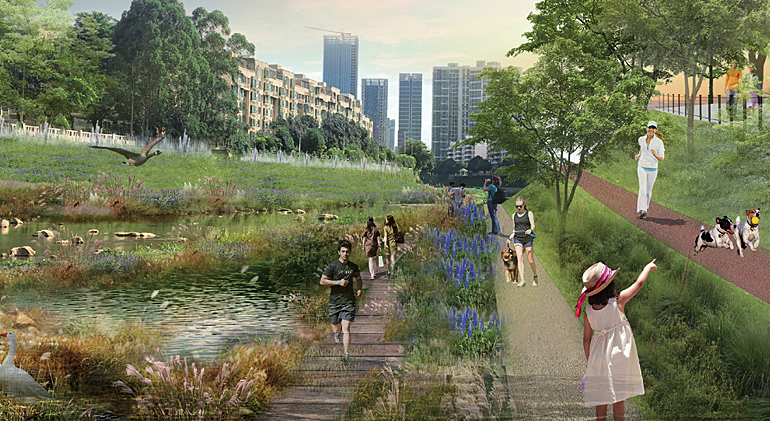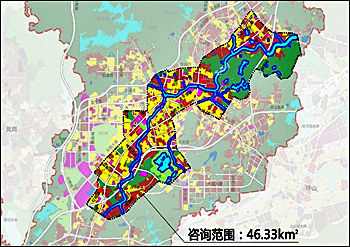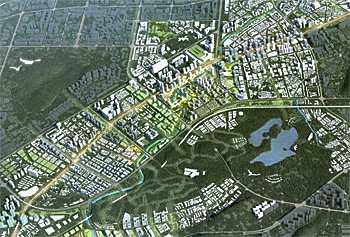Arcadis wins 1st prize in design competition for Longgang river, Shenzhen, China
 Team Arcadis Landscape architects & Urbanists, CallisonRTKL and Shenzhen University won the first prize in high-profile Shenzhen Longgang landscape design competition.
Team Arcadis Landscape architects & Urbanists, CallisonRTKL and Shenzhen University won the first prize in high-profile Shenzhen Longgang landscape design competition.
The winning design (top impression) is based on a masterplan that includes the restoration of the tributaries of the Longgang river and the creation of a river park in the city center of Shenzhen. The joint venture used the layer-cake method to separate first the different subsystems of the very complex urbanised river delta. The three main layers being the natural substratum at the bottom, the infrastructural networks in the middle and the land-use patterns on top.
 Area along the Longang river as selected for the competition (Photo:SZ Design centre).
Area along the Longang river as selected for the competition (Photo:SZ Design centre).
More liveable city
In its proposal, the joint venture used the existing water system and topography as a base for urban and land development models, thus creating an attractive linear Riverpark in the city center.
By re-naturalizing the tributaries we created a robust ecological and recreational network that will improve the quality of life within the city of Shenzhen.
Pearl river delta
Shenzhen is bordered by Hong Kong and has a population of 12 million people. It is one of the fastest growing cities in the world. In the agglomeration, the Pearl river delta, even 62 million people live, making it the largest metropolis in the world.
The Longgang River rises in Wutong Mountain and runs through Shenzhen. The challenge for the city is to accelerate future urbanisation with more efficient land use with explicit attention to local history and culture.
At the same time, spatial quality and the environment must improve.
 Third place winner was a design by China Urban Planning and Design Institute and KCAP International (photo: SZ Design centre).
Third place winner was a design by China Urban Planning and Design Institute and KCAP International (photo: SZ Design centre).
Layer approach
Landscape designer John Boon of Arcadis Netherlands explained that the design by the joint venture is based on ‘the 'layers approach'. "This approach has been developed in the Netherlands", Boon said of Arcadis. "Not only does the design adress the main flow of the river but also the tributaries further upstream, which provide the water supply".
Boon: "By starting there, the river water does not become polluted and there are less peak flows during rainy periods".
This news item is based on the original release as published on the website of Arcadis/Landscape-architects.
Read also on this website
● Poland and the Netherlands to intensify cooperation on river restoration focused on multiple use of river area, 15 October 2018
● Nine remaining design teams reveal final proposals to make San Francisco climate proof, 22 May 2018
● Arcadis appointed as principal consultant for Sponge City programme in Wuhan, China, 17 March 2016
● Expertise: Resilient cities
● Country: China
More information
Arcadis
Amsterdam, the Netherlands
+31 20 2011 011
www.arcadis.com



